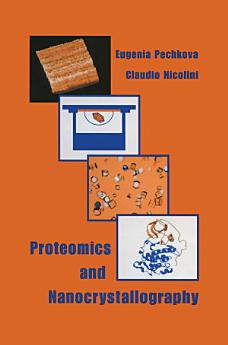Proteomics and Nanocrystallography
ธ.ค. 2012 · Springer Science & Business Media
eBook
190
หน้า
reportคะแนนและรีวิวไม่ได้รับการตรวจสอบยืนยัน ดูข้อมูลเพิ่มเติม
เกี่ยวกับ eBook เล่มนี้
The book addresses the most recent developments in structural and functional proteomics underlying the recent contributions given in these areas by our laboratory to the instrumentations, the methods and the procedures as mutuated from the nanoscale sciences and technologies. These developments introduced in the last few years make now possible protein massive identification (mass spectrometry and biomolecular arrays down to nanoamounts) and protein structural characterization in solution and in crystals down to the atomic scale to an extent and to a degree so far unmatched. Emphasis is placed in the growth by nanobiofilm template of protein crystals of any type and size from millimeter to micron, leading in combination with microfocus synchrotron technology and atomic force microscopy to the definition of a new field called nanocrystallography. The few useful examples being shown, concerning yet structurally unsolved proteins, point this very promising approach nanotechnology-based in structural proteomics using highly focused X-rays. This has not to be confused with the important study of nanocrystals, both organic and inorganic, and novel diamond like nanocomposite materials and devices having 3D protein crystals as matrices to be equilibrated with nanoparticles/gold/silver to be utilized in the most diversified electronic applications here also summarized. vii Acknowledgments We are particularly grateful to Giuseppe Zanotti at the University of Padova for his fundamental collaboration during all the crystallographic studies.
ให้คะแนน eBook นี้
แสดงความเห็นของคุณให้เรารับรู้
ข้อมูลในการอ่าน
สมาร์ทโฟนและแท็บเล็ต
ติดตั้งแอป Google Play Books สำหรับ Android และ iPad/iPhone แอปจะซิงค์โดยอัตโนมัติกับบัญชีของคุณ และช่วยให้คุณอ่านแบบออนไลน์หรือออฟไลน์ได้ทุกที่
แล็ปท็อปและคอมพิวเตอร์
คุณฟังหนังสือเสียงที่ซื้อจาก Google Play โดยใช้เว็บเบราว์เซอร์ในคอมพิวเตอร์ได้
eReader และอุปกรณ์อื่นๆ
หากต้องการอ่านบนอุปกรณ์ e-ink เช่น Kobo eReader คุณจะต้องดาวน์โหลดและโอนไฟล์ไปยังอุปกรณ์ของคุณ โปรดทำตามวิธีการอย่างละเอียดในศูนย์ช่วยเหลือเพื่อโอนไฟล์ไปยัง eReader ที่รองรับ






